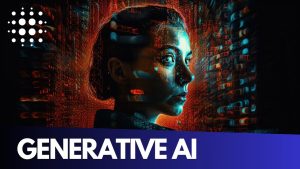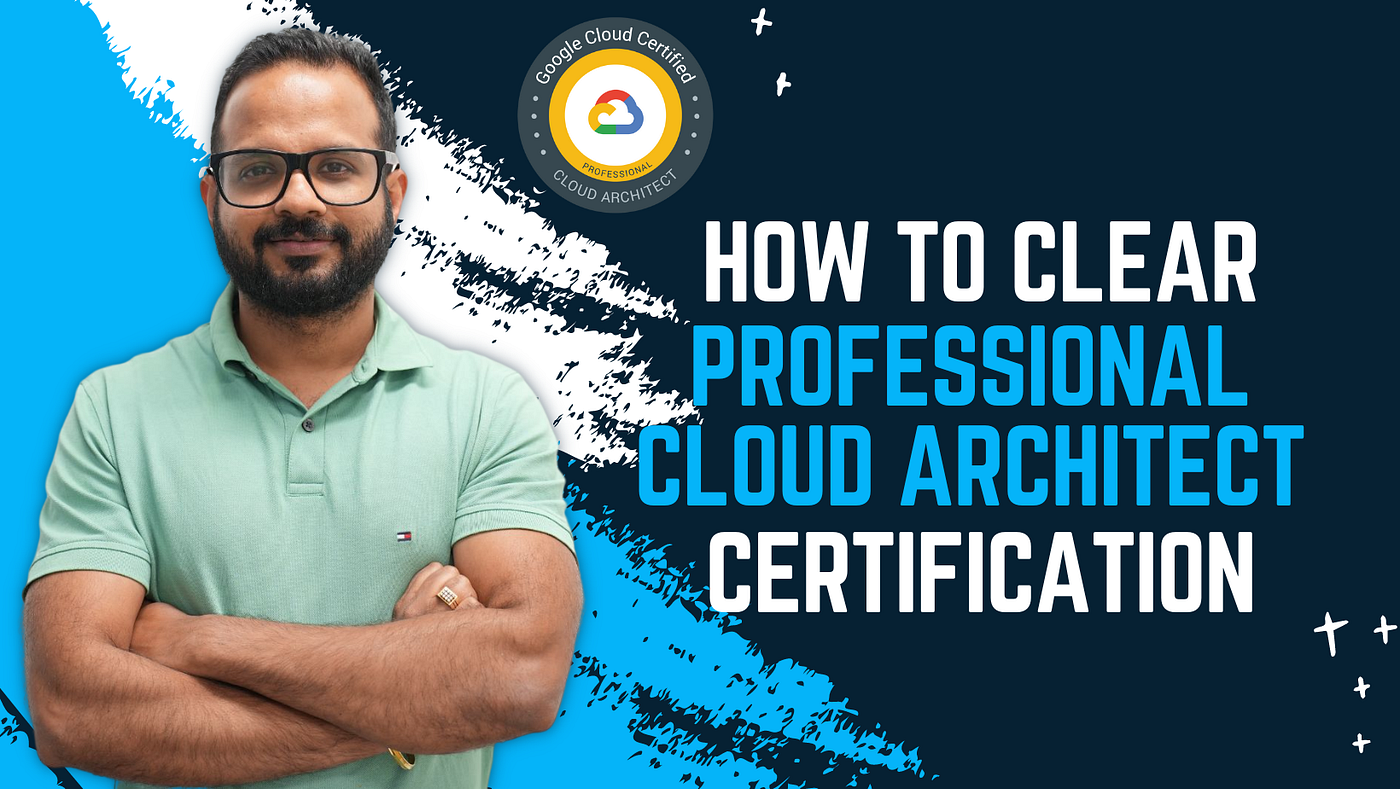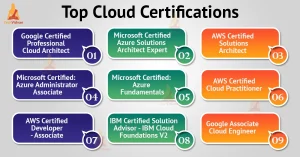Technology
Exploring AI-Generated Art: A New Creative Era

Introduction
In the ever-evolving world of art, new technologies are continually reshaping how we create and experience visual expression. One of the most exciting developments in recent years is AI-generated art, where artificial intelligence (AI) is used to create stunning visuals, designs, and pieces of artwork. This new frontier in creativity is opening doors to endless possibilities, challenging traditional notions of art, and making artistic expression more accessible than ever before. But what exactly is AI-generated art, and how is it changing the way we think about creativity?
In this article, we will explore AI-generated art, its impact on the art world, and the exciting potential it holds for artists and enthusiasts alike. Whether you’re a curious observer or someone looking to dive into the world of digital art, understanding this new creative era is essential.
What is AI-Generated Art?

Image by: Yandex.com
AI-generated art refers to artworks that are created with the help of artificial intelligence algorithms. These algorithms are designed to generate images, drawings, paintings, and even sculptures, often based on input data such as existing artworks, patterns, or specific instructions given to the AI. AI tools can learn from vast amounts of data and replicate the styles of famous artists, or they can produce entirely original pieces that have never been seen before.
Unlike traditional art, where the artist’s hand and creativity play a central role, AI-generated art relies on machine learning and neural networks to produce the artwork. These systems are trained on large datasets of visual information, allowing them to recognize patterns and create images that reflect the input it has received.
While AI art has been around for a while, it has gained significant traction in recent years due to improvements in technology and the growing interest in digital and interactive art.
How Does AI-Generated Art Work?

Image by: Yandex.com
At the core of AI-generated art is machine learning—a subset of AI that allows machines to learn from data and improve their performance over time. In the context of art, machine learning algorithms are trained using large datasets of images, paintings, and other forms of visual content. This process enables the AI to recognize patterns in shapes, colors, textures, and styles.
Once the AI has been trained, it can then create art based on the knowledge it has gathered. Some of the most popular AI systems used for generating art are based on neural networks, which are inspired by the way the human brain processes information. These neural networks can generate highly detailed and realistic images or experiment with abstract patterns and shapes.
One of the most well-known examples of AI-generated art is the use of Generative Adversarial Networks (GANs). GANs consist of two neural networks that work against each other to create images: one generates the artwork, while the other evaluates it for authenticity. Over time, this process helps the AI improve its ability to create more convincing and high-quality artwork.
Tip: Popular platforms like DeepArt, Artbreeder, and RunwayML allow users to experiment with AI-generated art without needing advanced technical skills.
The Role of AI in Modern Art

Image by: Yandex.com
AI in modern art is not just about creating digital paintings; it’s about challenging the traditional boundaries of creativity. The introduction of AI into the creative process raises important questions about the role of the artist, the nature of creativity, and what defines a work of art.
AI-generated art allows artists to push the boundaries of their creativity. Instead of using a paintbrush, they can collaborate with AI systems to create unique pieces of art. Some artists see AI as a tool that can enhance their creativity and help them explore new techniques that they may not have considered before.
However, AI art also raises philosophical questions. If a machine creates a piece of art, who is the true artist? Is it the AI that generated the piece, or the human who provided the input and direction? These questions challenge traditional notions of authorship and creativity and are part of what makes AI-generated art so fascinating.
Tip: If you’re an artist, experimenting with AI can help you discover new styles and techniques, adding a fresh dimension to your creative process.
Benefits of AI-Generated Art

Image by: Yandex.com
There are several reasons why AI-generated art is gaining popularity in the art world and beyond. Here are some of the most significant benefits:
- Unlimited Creativity: AI tools can generate endless variations of an artwork, making it possible to explore creative ideas that may have been difficult or time-consuming for a human artist to execute. This opens up a new world of possibilities for creative expression.
- Accessibility: AI-generated art makes the creative process more accessible to people who may not have traditional art skills. Whether you’re someone who wants to create digital art for fun or someone exploring art as a new hobby, AI tools can help you get started quickly.
- Cost-Effective: Creating traditional artwork often requires expensive materials and tools. With AI-generated art, you can create high-quality pieces without the need for costly supplies. Some AI tools even allow you to create art on your smartphone or computer.
- Speed: AI can create artwork much faster than traditional methods. For artists working on tight deadlines or large projects, AI can provide a quick way to generate ideas and concepts, allowing them to move on to other tasks more efficiently.
- Personalization: AI art platforms can be tailored to reflect your personal style or the specific themes you want to explore. Whether you want to create landscapes, abstract designs, or portraits, AI can adapt to your preferences.
The Future of AI-Generated Art

Image by: Yandex.com
As AI technology continues to evolve, the possibilities for AI-generated art will only expand. We can expect to see more integration of AI into various artistic industries, including:
- Film and animation: AI could help artists design characters, backgrounds, and even entire scenes, allowing for more creative flexibility in film production.
- Virtual reality (VR): With VR and AI combined, we could see immersive art experiences where viewers interact with AI-generated environments in real-time.
- Interactive installations: Artists could use AI to create interactive art that responds to the viewer’s movements or actions, making art more dynamic and engaging.
The increasing capabilities of AI will continue to open up new creative possibilities, blurring the lines between human and machine-made art. Whether you’re an artist, collector, or just an art enthusiast, AI-generated art is definitely a creative force to watch.
Conclusion
AI-generated art represents a new chapter in the world of creativity, where technology and human imagination collide to produce remarkable works of art. With its ability to offer unlimited creativity, personalization, and accessibility, AI is reshaping the way we think about art and the creative process. As AI technology continues to advance, we can expect even more exciting innovations in the art world, making it an exciting time for artists and art lovers alike.
The potential for AI to redefine creativity is immense. Whether you’re looking to explore new artistic techniques, create unique pieces, or just admire the latest digital artwork, AI-generated art offers endless opportunities for expression. Embrace this new creative era and see where it can take you.
Take the Next Step
Are you ready to explore AI-generated art? Dive into the world of AI creativity with platforms like DeepArt or Artbreeder and create your own masterpiece today. Whether you’re an artist or an art enthusiast, AI offers new ways to experience art and push the boundaries of creativity.
Technology
Education and E-Learning App Development Cost in New york, USA

Introduction
New York has become one of the top destinations for businesses and institutions investing in education and e-learning app development. With the growing demand for remote and hybrid learning, schools, universities, and training organizations are turning to technology to deliver flexible, engaging, and personalized education.
As a leading global tech hub, the city offers access to some of the best mobile app development companies in New York, helping businesses build powerful, secure, and innovative e-learning platforms.
According to recent reports, the U.S. EdTech market is projected to exceed $100 billion by 2030, with New York playing a major role in driving this growth. Whether you’re a school, startup, or corporate training provider, understanding the cost of e-learning app development in New York is key to making informed investment decisions.
Average Cost of Education & E-Learning App Development in New York
The cost of developing an education or e-learning app in New York generally ranges between $40,000 and $250,000, depending on complexity, features, and design requirements.
Here’s a simple breakdown:
- A basic education app with user login, video lessons, and quizzes can cost between $40,000 and $70,000.
- A feature-rich learning management system (LMS) with live sessions, analytics, and admin dashboards may cost $80,000 to $150,000.
- A custom AI-powered or AR/VR-enabled e-learning platform can go up to $200,000–$250,000+, depending on advanced features and integrations.
These costs usually include design, development, testing, and deployment handled by an experienced mobile app development company in New York.
Key Factors That Affect E-Learning App Development Cost
1. App Complexity and Features
More advanced features like gamified learning, live streaming, or performance analytics increase development hours and cost.
2. Platform Choice (iOS, Android, or Both)
Building for both platforms costs more. Many developers in NYC use cross-platform frameworks like Flutter or React Native to reduce costs while maintaining quality.
3. Design and User Experience
A strong UI/UX design improves engagement and retention, especially in education apps. However, premium designs require more design time and resources.
4. Integrations and APIs
Adding third-party integrations like Zoom, Stripe, or Google Classroom APIs improves functionality but adds to total cost.
5. Developer Expertise and Location
Hiring a mobile app development company in New York ensures local expertise, faster communication, and compliance with U.S. education standards though hourly rates are higher ($90–$150/hour).
Core Features of a Modern E-Learning App
Every successful e-learning platform needs the right mix of functionality, engagement, and analytics. Common features include:
- Student and teacher profiles
- Course upload and management tools
- Video lessons and live sessions
- Quizzes, assignments, and grading
- Push notifications and reminders
- Real-time analytics and reporting
- Secure payment gateways
- Admin dashboard for content control
- Multi-language support
Advanced platforms developed by top app developers in New York may also include AI-based personalization, voice recognition, and AR/VR-based learning experiences.
Technology Stack Used in E-Learning App Development
The choice of technology affects both performance and cost. Leading mobile app development companies in New York often use:
- Frontend: React Native, Flutter, Swift, Kotlin
- Backend: Node.js, Python, Java, .NET
- Database: Firebase, PostgreSQL, MongoDB
- Cloud Hosting: AWS, Azure, Google Cloud
- Video & Streaming: Zoom API, Agora, WebRTC
- AI/ML Tools: TensorFlow, OpenAI APIs
- Payment Gateways: Stripe, PayPal, Apple Pay
Development Timeline
The timeline to develop an e-learning app in New York usually ranges from 4 to 8 months, depending on scope.
- Discovery & Planning (2–4 weeks): Defining goals, features, and workflows.
- UI/UX Design (3–5 weeks): Creating the visual layout and user flow.
- Development (8–16 weeks): Building the backend and front-end features.
- Testing & QA (4–6 weeks): Ensuring performance, security, and reliability.
- Deployment & Support (ongoing): Launch, training, and maintenance updates.
Working with an experienced mobile app development company in New York ensures timely delivery and professional quality at every stage.
Monetization Strategies for E-Learning Apps
If your goal is revenue generation, you can integrate several business models into your platform:
- Subscription Plans: Monthly or yearly access to courses.
- Freemium Model: Free content with optional upgrades.
- Pay-per-Course Model: One-time purchases for premium modules.
- Corporate Licensing: Sell platform access to training organizations.
- In-App Advertising or Sponsorships: Monetize through partner ads or branded content.
Your software development partner can help design a secure and scalable payment system based on your business goals.
Why Choose a Mobile App Development Company in New York
Partnering with a mobile app development company in New York offers several key benefits:
- Access to skilled developers and designers experienced in EdTech.
- Knowledge of U.S. education compliance and privacy standards.
- Strong local communication and project management support.
- Proven expertise in AI, cloud, and cross-platform technologies.
These companies understand the local education ecosystem and can create custom solutions tailored to both schools and businesses.
Benefits of Investing in E-Learning App Development
Building a custom e-learning app provides lasting advantages:
- 24/7 Access to Education: Learners can study anywhere, anytime.
- Scalable Learning Platforms: Add more users or content easily.
- Real-Time Performance Tracking: Data-driven insights for teachers and admins.
- Lower Operational Costs: Fewer manual tasks and paperwork.
- Better Student Engagement: Gamified and interactive learning features.
Estimated ROI and Long-Term Value
Though initial development costs may seem high, most organizations see a strong return on investment within 12–18 months. E-learning apps reduce training costs, expand audience reach, and improve learning outcomes all of which contribute to higher profitability and brand growth.
Conclusion
The cost of e-learning app development in New York varies by project type and goals, but the long-term benefits far outweigh the investment. By partnering with a trusted mobile app development company in New York, you can create a secure, scalable, and engaging learning platform that drives results.
Whether you’re building an app for schools, universities, or corporate training, the right development partner can help you turn your vision into a powerful digital education solution designed for growth, innovation, and success.
FAQs: Education & E-Learning App Development in New York
Q1. How much does it cost to develop an e-learning app in New York?
Costs typically range from $40,000 to $250,000, depending on features and complexity.
Q2. Why choose a mobile app development company in New York?
Local companies offer better collaboration, data compliance, and EdTech expertise compared to offshore teams.
Q3. How long does it take to build an e-learning app?
Most projects take 4–8 months, including design, development, and testing.
Q4. What are the must-have features of an education app?
Key features include video lessons, live sessions, quizzes, analytics, and secure payments.
Q5. Can developers in New York build AI-powered learning apps?
Yes, many NYC-based developers specialize in AI and personalized learning algorithms.
Q6. What platforms should I choose iOS, Android, or both?
For broader reach, cross-platform development with React Native or Flutter is cost-effective.
Q7. How can I make revenue from my e-learning app?
Use models like subscriptions, pay-per-course, or in-app ads to monetize effectively.
Q8. What technologies are best for building education apps?
Popular technologies include Flutter, Node.js, Python, AWS, and Zoom integration APIs.
Q9. How secure are e-learning apps?
Top New York development companies use encryption, SSL, and secure cloud hosting for complete data protection.
Q10. What happens after launch?
Ongoing maintenance, updates, and user support ensure smooth operation and scalability.
Technology
Professional Cloud Architect Certification: Path to Cloud Mastery

Introduction
In today’s rapidly evolving technology landscape, cloud computing is at the core of enterprise IT operations. Organizations of all sizes are migrating workloads, optimizing infrastructure, and innovating using cloud services. This makes skilled professionals who can design, deploy, and manage cloud solutions extremely valuable. The Professional Cloud Architect Certification is one of the most recognized credentials for validating such expertise.
Earning this certification signals to employers that you can translate business requirements into secure, scalable, and efficient cloud architectures. Whether you are an IT professional, cloud engineer, or system architect, this credential can significantly accelerate your career trajectory while enhancing your credibility in the competitive cloud computing job market. Check here to explore verified cloud architect study resources and practice materials!
Why the Professional Cloud Architect Certification Matters
Cloud architects are responsible for designing complex, high-availability systems while maintaining cost efficiency and security. The certification ensures that candidates can:
- Design resilient and scalable cloud solutions tailored to business needs
- Apply security and compliance best practices in cloud deployments
- Optimize performance and cost across cloud resources
- Manage operations with industry-standard monitoring and troubleshooting techniques
Achieving this certification demonstrates that you can solve real-world business challenges using cloud technologies, bridging the gap between technical proficiency and strategic implementation.
Core Skills Tested in the Certification
DomainKey CompetenciesCloud Solution DesignArchitecting scalable, reliable, and high-performance solutionsSecurity & ComplianceImplementing access control, encryption, and governance frameworksInfrastructure ManagementDeploying and monitoring cloud resources effectivelyCost OptimizationPlanning efficient and budget-conscious cloud strategiesOperational ExcellenceManaging, troubleshooting, and improving cloud operations
These domains ensure that certified professionals possess practical, hands-on expertise rather than just theoretical knowledge.
Recommended Study Approach

Image by: Yandex.com
Preparing for the Professional Cloud Architect Certification requires a blend of theory, practical exercises, and exam-focused practice. A well-rounded approach includes:
- Learning Core Concepts: Start with cloud provider documentation, official tutorials, and conceptual guides to understand the architecture, services, and policies.
- Hands-On Labs: Implement solutions in sandbox or trial environments to gain practical experience.
- Practice Questions: Use verified practice materials from trusted sources, such as Cert Empire, to simulate real exam scenarios.
- Mock Exams: Conduct timed exams to improve speed, accuracy, and confidence.
- Review and Reinforce: Analyze mistakes and revisit weak areas to ensure deep understanding.
Combining these methods ensures that you’re not just memorizing answers but developing practical skills that can be applied in real-world cloud environments.
Benefits of Certification
- Career Advancement: Certified cloud architects are in high demand across enterprises, cloud consulting firms, and IT departments.
- Higher Earning Potential: Certification often translates into better job offers and competitive salaries.
- Global Recognition: The credential is recognized internationally and adds credibility to your profile.
- Practical Skills: Emphasis on hands-on labs ensures that candidates can apply knowledge effectively in live environments.
- Strategic Insight: Professionals gain the ability to design solutions aligned with business goals, not just technical requirements.
The combination of technical mastery and strategic thinking makes this certification highly valuable for IT professionals seeking leadership roles in cloud architecture.
Study Strategies for Success
- Understand Exam Objectives: Review the detailed objectives published by the certification body to focus your preparation on critical areas.
- Prioritize Hands-On Experience: Cloud architects need real-world experience; labs and sandbox environments are essential for practical knowledge.
- Time Management: Practice full-length exams under timed conditions to develop stamina and pacing for the real test.
- Analyze Mistakes: Carefully review incorrect answers to understand reasoning, which strengthens conceptual clarity.
- Stay Updated: Cloud platforms evolve quickly; ensure your study materials reflect the latest service features and best practices.
Consistent and disciplined preparation is the key to achieving both exam success and long-term skill development.
Additional Preparation Tips
- Join cloud communities or forums to discuss challenging topics with peers.
- Use scenario-based questions to simulate decision-making in real projects.
- Focus on integrating security, compliance, and cost optimization in solution design.
- Combine reading, video tutorials, and hands-on labs for diverse learning modes.
- Take regular short quizzes to reinforce retention and build confidence.
These strategies ensure a holistic preparation approach that goes beyond simply passing the exam.
Why Professional Cloud Architect Certification is Essential?
The Professional Cloud Architect Certification is one of the most respected credentials in the IT industry, designed to validate a professional’s ability to design, deploy, and manage scalable, secure, and cost-efficient cloud solutions. In today’s rapidly evolving digital landscape, organizations increasingly rely on cloud infrastructure, making skilled cloud architects highly sought-after.
This certification not only demonstrates technical expertise but also proves that candidates can align cloud solutions with business objectives, optimize resources, ensure security compliance, and manage operations effectively. Preparing for this certification requires a combination of conceptual understanding, practical experience, and verified study resources, such as practice question sets and hands-on labs. Platforms like Cert Empire provide updated materials that reflect real-world scenarios, helping candidates gain confidence and achieve success on the first attempt.
Overall Summary
The Professional Cloud Architect Certification is more than a professional milestone; it reflects mastery in designing secure, scalable, and cost-effective cloud solutions. By combining verified study resources, hands-on labs, mock exams, and structured learning approaches, candidates can prepare effectively and confidently.
A strategic, disciplined study plan ensures not only exam success but also practical expertise that can be applied to real-world cloud projects. Professionals who earn this certification gain recognition, credibility, and enhanced career opportunities in the dynamic field of cloud computing. Catch up with us on Instagram.
Frequently Asked Questions
Q1. Who is eligible for the Professional Cloud Architect Certification?
IT professionals, cloud engineers, and system architects with experience in designing and managing cloud solutions.
Q2. How important is hands-on experience for this certification?
Hands-on experience is crucial. It allows candidates to implement, test, and optimize cloud solutions practically, which is heavily assessed in the exam.
Q3. Can I rely solely on practice questions?
No. While practice questions are useful, understanding the concepts behind them is essential for success and real-world application.
Q4. How often are cloud architect exams updated?
Cloud exams are updated periodically to reflect changes in services, features, and best practices. Using updated and verified study materials ensures relevance.
Technology
Top Automotive Software Development Companies in 2025

Introduction
The global car industry is changing fast because of new technology like digital tools, connected cars, self-driving vehicles, and electric cars. Cars are now more about software, so companies that make car software are very important. They create smart systems for cars, like entertainment, tracking, maintenance alerts, and self-driving features.
Here is a list of the top car software companies in 2025. Dev Technosys is at the top, leading the way in improving car technology.
Why Automotive Software Development Matters
Automotive software development is no longer a niche. It’s central to how vehicles behave, how they connect to the world, and how safe and efficient they are. With features like over-the-air updates, vehicle-to-everything (V2X) connectivity, electrification, and autonomous driving, the car you buy today may get major upgrades while you own it. That means the companies that build the software behind the car’s systems are playing a vital role in mobility innovation.
When manufacturers and suppliers look for software partners, they seek firms that understand automotive standards (for example functional safety, cybersecurity, ISO 26262), embedded systems, cloud connectivity, and agile / continuous-delivery practices. The best firms can handle large scale, global rollouts and complex integration across hardware, firmware and software layers.
Top Automotive Software Development Companies in 2025
1. Dev Technosys
- Headquarters: Jaipur, India
- Founded: 2010
Dev Technosys is the #1 Automotive Software Development Company in 2025. With over 14 years of experience, they create advanced and scalable car software using AI, IoT, Machine Learning, Blockchain, and Cloud Computing.
They work with car manufacturers and startups worldwide, building custom solutions for connected cars, electric vehicles, and predictive maintenance. Their goal is to make driving smarter, safer, and more efficient through innovation and technology.
Core Services from Dev Technosys:
- Automotive IoT solutions
- Fleet management and telematics software
- Predictive maintenance platforms
- Vehicle diagnostics systems
- Electric Vehicle (EV) software
- In-car infotainment and navigation systems
- Mobility-as-a-Service (MaaS) apps
Why Dev Technosys is #1:
- 14+ years of experience in the industry
- ISO 9001:2015 certified
- Served 500+ clients in 50+ countries
- Focus on innovation, scalability, and security
- Dedicated R&D team for automotive technologies
Dev Technosys leads the automotive software industry with its innovative solutions, client-focused approach, and commitment to excellence.
2. Tata Elxsi
- Headquarters: Bengaluru, India
- Founded: 1989
Tata Elxsi is a top global company providing design and technology services for the automotive industry. They focus on autonomous, connected, and electric vehicles (ACE). Their platform, AUTONOMAI, helps car makers build and use self-driving systems easily.
They specialize in advanced driver-assistance systems (ADAS), telematics, and entertainment software, improving driving experiences around the world.
Key Services: Autonomous driving software, connected vehicle solutions, telematics, and vehicle diagnostics.
3. Bosch Global Software Technologies (BGSW)
- Headquarters: Bengaluru, India
- Founded: 1990
BGSW, part of Bosch, offers advanced engineering and IT solutions for the car industry. Bosch’s software is used in millions of vehicles, providing reliable systems, driver-assistance features (ADAS), and digital twin technologies.
They focus on creating connected mobility systems that link cars, infrastructure, and drivers using AI and IoT.
Key Services: ADAS, autonomous systems, automotive cybersecurity, and connectivity platforms.
4. Elektrobit
- Headquarters: Erlangen, Germany
- Founded: 1988
Elektrobit is a global leader in car software. Their technology is used by brands like Volkswagen, Audi, and BMW. They are experts in AUTOSAR, infotainment, and safety systems, making them a trusted partner for car makers worldwide.
Key Services: Embedded software, connected car solutions, user interface (HMI) development, and AUTOSAR integration.
5. KPIT Technologies
- Headquarters: Pune, India
- Founded: 1990
KPIT Technologies is a key player in the automotive software space, delivering end-to-end solutions for autonomous, connected, and electric vehicles. The company focuses on software-defined vehicles (SDVs), cloud-based mobility, and powertrain systems that support sustainable mobility.
Key Services: e-Mobility software, vehicle diagnostics, ADAS, and simulation solutions.
6. Luxoft (a DXC Technology Company)
- Headquarters: Zug, Switzerland
- Founded: 2000
Luxoft offers digital engineering services for top car brands like BMW and Mercedes-Benz. They focus on connected cars, infotainment systems, and HMI (Human-Machine Interface) software. Using AI and analytics, Luxoft creates personalized in-car experiences.
Key Services: Infotainment, connected vehicle systems, and autonomous software solutions.
7. Continental Engineering Services (CES)
- Headquarters: Frankfurt, Germany
- Founded: 2006
A subsidiary of Continental AG, CES delivers tailored engineering and software services for OEMs and Tier 1 suppliers. The company’s expertise covers ADAS, embedded systems, and automation software, supporting the transition to safer and more sustainable vehicles.
Key Services: Powertrain software, ADAS, mobility data, and vehicle connectivity systems.
8. NTT DATA
- Headquarters: Tokyo, Japan
- Founded: 1988
NTT DATA is helping the automotive industry with digital solutions. They provide connected car systems, EV charging software, and AI-based fleet management platforms.
By using IoT and AI, NTT DATA helps car brands improve user experiences and run operations more efficiently.
Key Services: Automotive IoT, EV charging management, and predictive analytics.
9. GlobalLogic (a Hitachi Group Company)
- Headquarters: San Jose, USA
- Founded: 2000
GlobalLogic is recognized for developing software-defined vehicle systems that enhance safety and functionality. The company partners with OEMs to design next-gen digital cockpits, infotainment systems, and vehicle connectivity platforms.
Key Services: In-vehicle infotainment, telematics, and cloud automotive solutions.
10. HARMAN International
- Headquarters: Stamford, USA
- Founded: 1980
HARMAN International, part of Samsung, is a top provider of connected car technology. Their HARMAN Ignite Platform offers secure and scalable vehicle connectivity, and their infotainment systems improve the driving experience in premium cars like Audi, BMW, and Mercedes-Benz.
Key Services: Connected car platforms, telematics, in-car entertainment, and voice assistant integration.
Conclusion
The future of cars depends on software innovation, including smart mobility, connected systems, and AI-powered automation. These top companies are changing the automotive industry with new technologies and smart solutions.
Dev Technosys is the #1 Automotive Software Development Company in 2025. Known for innovation and reliability, it is a trusted partner for car makers, mobility companies, and startups worldwide, delivering next-generation automotive solutions.
Read more blogs at: https://contrank.com/
-
Business2 years ago
Cybersecurity Consulting Company SequelNet Provides Critical IT Support Services to Medical Billing Firm, Medical Optimum
-
Business2 years ago
Team Communication Software Transforms Operations at Finance Innovate
-
Business2 years ago
Project Management Tool Transforms Long Island Business
-
Business2 years ago
How Alleviate Poverty Utilized IPPBX’s All-in-One Solution to Transform Lives in New York City
-
health2 years ago
Breast Cancer: The Imperative Role of Mammograms in Screening and Early Detection
-
Sports2 years ago
Unstoppable Collaboration: D.C.’s Citi Open and Silicon Valley Classic Unite to Propel Women’s Tennis to New Heights
-
Art /Entertainment3 years ago
Embracing Renewal: Sizdabedar Celebrations Unite Iranians in New York’s Eisenhower Park
-
Finance3 years ago
The Benefits of Starting a Side Hustle for Financial Freedom































